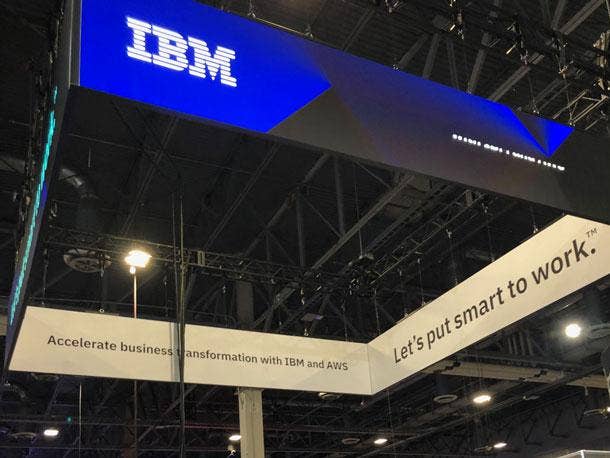IBM Assimilates Red Hat Storage Technology Into Own Storage Business
IBM, which three years ago acquired Red Hat, is now moving Red Hat OpenShift Data Foundation and Red Hat Ceph, along with their development teams, into IBM Storage as part of a move to make a bigger play in the software-defined and open-source storage worlds.

IBM Tuesday said it has absorbed storage technology and teams from its Red Hat business to combine them with IBM’s own storage business unit as a way to help clients take advantage of the two without requiring extra integration or having to deal with multiple sales teams.
IBM is integrating Red Hat OpenShift Data Foundation with its IBM Spectrum Fusion and will offer Red Hat Ceph-based storage technologies to its clients in a move to continue Big Blue’s software-defined storage leadership, said Brent Compton, senior director of Data Foundation for Red Hat’s hybrid cloud business.
For IBM, which in mid-2019 acquired Red Hat in a $34-billion deal, the move ensures maximum support for Red Hat OpenShift Data Foundation and Ceph, Compton told CRN.
[Related: 2022 Storage 100: Who’s Got Your Backup?]
“OpenShift Data Foundation and Ceph will become a big part of IBM Storage,” he said. “IBM has been looking for a way to take advantage of Ceph and ODF, and now it can.”
Ceph is an open-source software-defined object storage technology with interfaces for object, block and file storage. Red Hat OpenShift Data Foundation is a software-defined container-native storage that provides cluster data management capabilities as part of the OpenShift container platform.
Scott Baker, chief marketing officer and vice president of IBM hybrid cloud portfolio and product marketing, told CRN the move to combine Red Hat and IBM storage technologies sets the stage for growth in the combined software-defined storage portfolio.
“Customers not only get a choice of where storage runs—at the edge, in the cloud, or on-prem—but will find storage software releases will no longer be tied to the timing of storage hardware releases,” Baker said. “For instance, IBM normally enhances its Spectrum Virtualize or Spectrum Scale with new versions of the IBM FlashSystem. But with software-defined storage, we can drive changes quicker if they’re not tied to hardware releases.”
By bringing Red Hat OpenShift Data Foundation and Ceph into IBM, customers get the opportunity to access unified block, file, and object storage without regard to the actual underlying hardware, Baker said.
“They can use Ceph to add the right type of storage depending on the protocol they need,” he said. “Ceph and ODF also simplifies how IBM provides data storage and protection. To do all that with IBM’s storage portfolio takes time. With CEF and ODF as part of IBM Storage, this can get done immediately.”
It really is the best of both worlds, as Red Hat customers will also see strong benefits from IBM Storage, Compton said.
“It’s important to note that IBM will continue to offer OpenShift Data Foundation inside the Red Hat OpenShift Platform Plus hybrid cloud platform,” he said. “So if a customer gets pre-integrated OpenShift Data Foundation inside Red Hat OpenShift Platform Plus, it accelerates their time to market. There’s no need to integrate the storage. This will not change.”
Also, Red Hat OpenShift customers have used Ceph to accelerate their time to scale for years, and Red Hat will continue to sell Ceph, Compton said.
“But by moving Ceph to IBM Storage, IBM will accelerate development of the storage-specific features,” he said. “Red Hat is not a storage company. So this will accelerate development of unified capabilities.”
IBM’s storage move makes good on the potential many saw with the company’s acquisition of Red Hat, said John Teltsch, chief revenue officer at Converge Technology Solutions, a Gatineau, Quebec-based solution provider and channel partner to both IBM and Red Hat that ranked No. 36 on CRN’s 2022 Solution Provider 500.
“This is something the channel has been waiting for ever since IBM acquired Red Hat,” Teltsch told CRN. “IBM has been doing a lot around software-defined storage. And when you add in Red Hat, it gives us an integrated solutions play. It lets us build an integrated sales team. We don’t have to first talk about IBM storage capabilities, and then bring in our Red Hat team to talk about Red Hat.”
Converge Technology Partners’ IBM and Red Hat sales teams are currently two separate teams, said Teltsch, who joined the company in March from IBM, where he held numerous sales leadership roles, including two years as Big Blue’s channel chief.
“Once IBM and Red Hat storage are together, it gets more simple to sell,” he said. “And it simplifies our training while IBM will have one integrated set of offerings for its clients. This lets us bring the best of Red Hat open-source capabilities with IBM storage. We’re living in a data-driven world. This move simplifies our go-to-market, as well as simplifies the client experience, client engagement, and client adoption.”